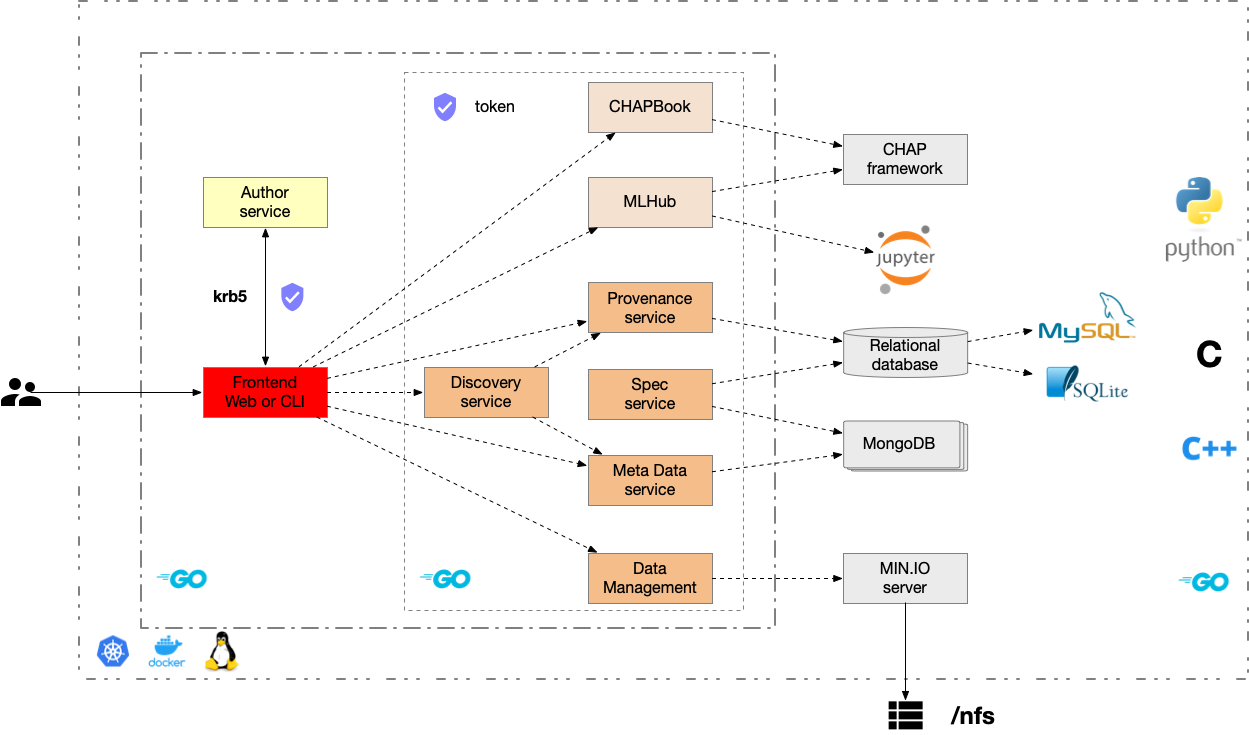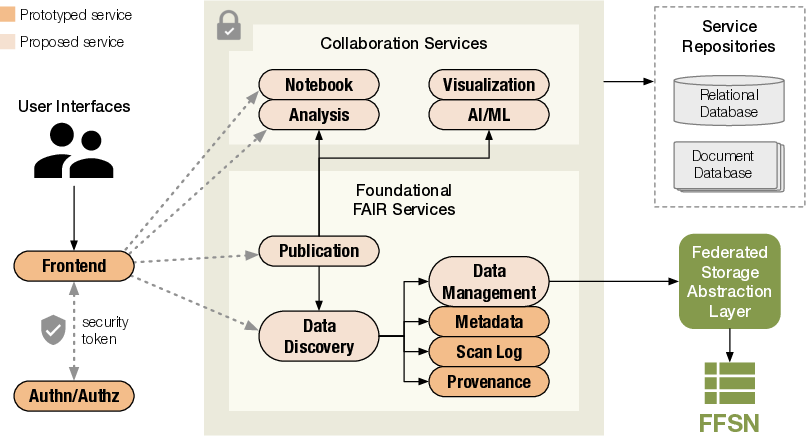FOXDEN services
FOXDEN infrastructure is based on loosely couple services, and properly layered/insulated as shown in the following diagram:

A user communicate through a secure channel with all of them either view web UI or CLI interfaces. Initially, each user is authenticated and obtain authorization token from Authz service. Each token carry user name and scope associated with user which allow (s)he to communicate with individual FOXDEN services. The coupling between FOXDEN services is done via Dataset IDentifier (did) which is presented in each individual FOXDEN service. For instance, once user look-up desired meta-data it has did in it which can be used to look-up its provenance information and even publish desired dataset in Publication service.
All communication between services is done via HTTP protocol with JSON payload. For instance, a client can inject new data or user can look-up some information from FOXDEN via HTTP request.
Currently the following services are implemented:
- Frontend service: web interface, deployed on port 8344
- Command line (CLI) tool
- Authentication and authorization service, deployed on port 8380
- Data Discovery service, deployed on port 8320
- MetaData service, deployed on port 8300
- Provenance service, deployed on port 8310
- Data Management service, deployed on port 8340
- Publication service, deployed on port 8355
- SpecScan service, deployed on port 8390
- MLHub, deployed on port 8350
- CHAP Notebook, deployed on port 8181
Please see the following diagram how these services are
integrated with each other:

FOXDEN configuration
All services share a single file as FOXDEN configuration which organizes everything in corresponding blocks. Each configuration block is responsible for individual FOXDEN service configuration. For more details see FOXDEN configuration.
CHESS integration
The FOXDEN services are deployed to CHESS and cover the
following workflow

 FOXDEN
FOXDEN